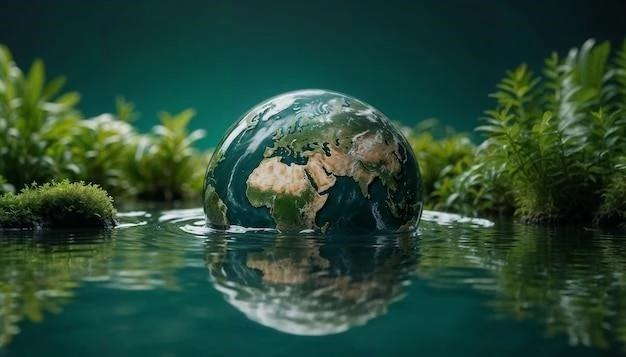Climate change is rapidly altering the delicate balance of ecosystems worldwide, posing a significant threat to biodiversity, particularly endangered species already on the brink of extinction․ The consequences of a warming planet, driven by human activities, are far-reaching and multifaceted, impacting species’ habitats, food sources, and overall survival prospects․ This article delves into the intricate relationship between climate change and its profound effects on endangered species, highlighting the urgent need for comprehensive conservation efforts;

Habitat Loss and Fragmentation
Climate change acts as a habitat disruptor, leading to shifts in temperature and precipitation patterns․ These alterations directly impact the availability and suitability of environments that endangered species rely upon․ As temperatures rise, species adapted to specific climatic conditions face shrinking ranges, forcing them to migrate to more suitable areas or face the risk of extinction․ For instance, rising sea levels threaten coastal habitats, putting vulnerable species like sea turtles and shorebirds at risk․ Similarly, changes in precipitation patterns can lead to prolonged droughts or increased flooding, altering the composition of ecosystems and displacing dependent species․
Altered Phenology and Disrupted Life Cycles
The timing of biological events, known as phenology, is crucial for the survival and reproduction of many species․ Climate change can disrupt these delicate timings, creating mismatches between species and their essential resources; For example, earlier spring thaws can lead to a mismatch between the emergence of pollinators and the flowering of plants, impacting both species’ reproductive success․ Additionally, changes in temperature can affect the breeding cycles of animals, leading to reduced offspring survival rates and overall population declines․
Increased Frequency and Intensity of Extreme Weather Events
Climate change is associated with an increase in the frequency and intensity of extreme weather events such as hurricanes, droughts, and wildfires․ These events can have devastating impacts on endangered species and their habitats․ For instance, hurricanes can destroy nesting sites and inundate coastal areas with saltwater, harming both terrestrial and marine species․ Similarly, prolonged droughts can lead to food and water shortages, increasing competition and mortality rates, particularly for already vulnerable populations․
Ocean Acidification
The absorption of excess carbon dioxide by the ocean leads to ocean acidification, a significant threat to marine ecosystems․ This process lowers the pH of seawater, impacting the ability of marine organisms, such as corals and shellfish, to build and maintain their shells and skeletons․ The decline of these foundational species has cascading effects throughout the entire marine food web, impacting numerous endangered species that rely on these habitats for survival․

Synergistic Effects with Other Threats
Climate change often exacerbates existing threats to endangered species, such as habitat loss, pollution, and invasive species․ These compounding pressures can overwhelm a species’ ability to adapt and survive․ For example, habitat fragmentation caused by human development limits the ability of species to migrate in response to changing climatic conditions, making them more vulnerable to local extinctions․
Conservation Implications and Strategies
Addressing the multifaceted threats posed by climate change to endangered species requires a multi-pronged conservation approach that includes:
- Mitigation: Reducing greenhouse gas emissions through transitioning to renewable energy sources, improving energy efficiency, and promoting sustainable land management practices is crucial to slowing down the rate of climate change and mitigating its impacts․
- Adaptation: Implementing conservation strategies that help species and ecosystems adapt to the changing climate, such as habitat restoration, assisted migration, and captive breeding programs, can enhance species’ resilience․
- Protected Areas: Expanding and strengthening the network of protected areas is essential to safeguarding critical habitats and providing refuge for endangered species facing climate-related threats․
- Research and Monitoring: Continued research and monitoring efforts are crucial for understanding the complex interactions between climate change and endangered species, informing conservation strategies, and tracking the effectiveness of interventions․
- International Cooperation: Climate change is a global challenge that requires collaborative efforts from governments, organizations, and individuals worldwide to address its impacts on biodiversity and endangered species․
Conclusion
Climate change presents a significant and escalating threat to endangered species worldwide․ The interconnected nature of ecosystems means that the loss of even a single species can have cascading effects on entire ecosystems, impacting human societies as well․ Urgent and comprehensive conservation efforts are essential to mitigate the impacts of climate change, protect endangered species, and preserve the planet’s biodiversity for future generations․ By acknowledging the severity of the threat and taking collective action, we can strive to ensure the survival of these vulnerable species and the health of our planet․










